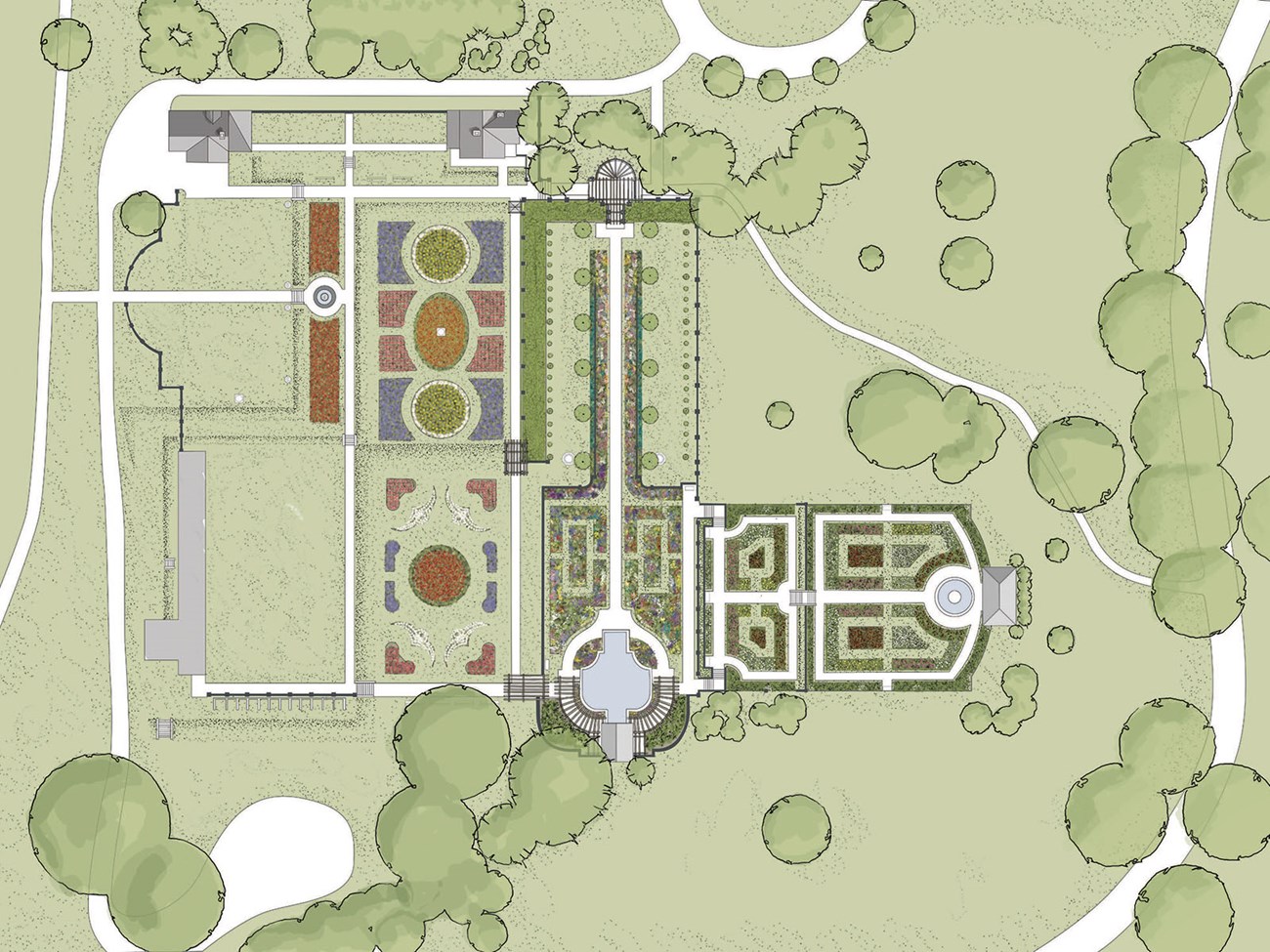Last updated: September 21, 2020
Thing to Do
Visit the Formal Gardens

The gardens at Hyde Park were first developed around 1799 by Samuel Bard, son of John Bard, a respected physician in New York City. The gardens were later redesigned and expanded by subsequent owners, including the introduction of new enclosed gardens, with conservatories, terraces, buildings, and perimeter walls. When the Vanderbilts purchased Hyde Park in 1895, they introduced further design modifications in the gardens that were typical of late Gilded Age garden design.
Traveling abroad, wealthy Americans developed enthusiasm for developing gardens with a European influence. Particularly popular was the Italian style of garden layout and design. The Vanderbilts traveled extensively both in Britain and Continental Europe and like many of their contemporaries were deeply impressed by the pleasure grounds and gardens they visited. Back at Hyde Park, the Vanderbilts incorporated many of the design elements they had seen in Europe. The principal features of the Italian style included geometric patterning, axial spatial organization, and reliance on proportion and interconnection of parts by sight lines.Over a period from 1901 to 1934, the Vanderbilts worked with four noted landscape architects and horticulturists, including Charles A. Platt, James L. Greenleaf, Thomas Meehan and Sons, and Robert B. Cridland. These designers developed plans and oversaw construction on the formal gardens of Hyde Park. Three of these design professionals, Greenleaf, Meehan, and Cridland, altered various areas of the gardens. The end result was a complex of gardens that, though reasonably consistent in style by area, was the product of at least four different designers. A more comprehensive history of the gardens can be found on the park's website located here.
Getting There
Parking is not available at the gardens. They are located a distance of 700 feet following a gravel path from the mansion.

